![]()
![]()
![]()
Use LEFT and RIGHT arrow keys to navigate between flashcards;
Use UP and DOWN arrow keys to flip the card;
H to show hint;
A reads text to speech;
47 Cards in this Set
- Front
- Back
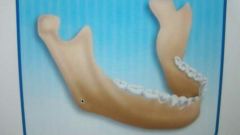
|
Ramus of mandible verticle position of mandible |
|
|
Intercuspation |
Relationship of cusps of premolar and molar of one jaw to the other when mouth is closed (Side view) |
|
|
Flush terminal plane |
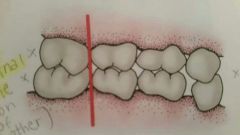
Only used for PRIMARY teeth
When max and mand are even with each other during occlusion (molaes are on top of eachother) |
|
|
Distal step |
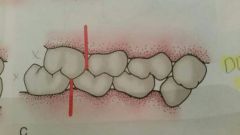
Only for Primary occlusion
Mand molars are more posterior than maxillary molars during occlusion
|
|
|
Mesial step |
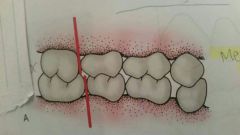
Only for PRIMARY teeth
Mand molars are more anterior than max molars during occlusion |
|
|
Diastema |
A gap or space between teeth Important for primary to hold spot for permanent |
|
|
Primate spaces |
Spaces inbetween primary teeth in the primary dentition -Diastema mesial to the max canines and distal to the mand canines |
|
|
Horizontal alignment |
Tongue is huge force for erupting teeth Tongue muscles can push teeth outward Muscles in cheek prevent from being pushed too far out |
|
|
Malocclusion |
Bad bite. Misalignment of teeth in dental arches |
|
|
Protrusion |
Teeth and arch pushed outward/forward Can be caused by tongue pushing on anterior teeth Protrude= forward Sometimes a "protruded" mandible is called an underbite |
|
|
Retrusion |
Teeth are pushed lingually from muscles of tongue Retrude= backwards or inwards |
|
|
Retrognathic jaw |
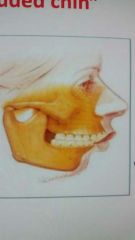
Retruded chin |
|
|
Prognathic jaw |
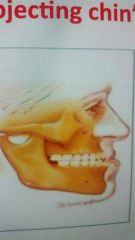
"Projecting chin" |
|
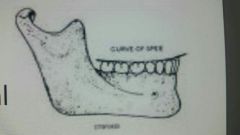
Curve of spee |
Curved alignment of occlusal plane. When looking laterally.
Natural curve from canine to molars |
|
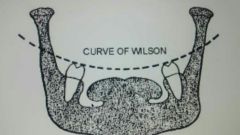
Curve of wilson |
Transverse curve (side to side) in posterior teeth from right to left --can be viewed from back of mouth |
|
|
Sphere of monson |
Theory that an imaginary sphere could balance and rest on the occlusal plane of the mandibular teeth Theory not proven |
|
|
Centric relation |
Way jaws fit together when you clench really hard There is maximum contraction of the jaw muscles --Not a natural way for teeth to occlude |
|
|
Centric occlusion |
Occlusion determined by how teeth fit together (the way you normally fit your teeth together) -aquired occlusion -habitual occlusion -convenience occlusion -intercuspal position |
|
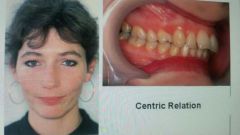
Centric relation |
Muscles clenched as teeth occlude |
|
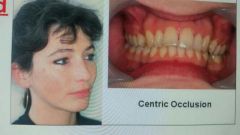
Centric occlusion |
Muscles are more relaxed due to a "natural fit" of teeth occluding |
|

Overjet |
Horizontal overlap of teeth |
|

Overbite |
Vertical overlap of of teeth |
|
|
EDGE to EDGE bite |
Anterior teeth "occlude" on incisal edges (not good) |
|
|
END to END bite |
When cusps of posterior teeth hit on cusps during occlusion Feel slike bite is "off" |
|
|
Crossbite |
Can be anterior and posterior teeth Where teeth or tooth in MAXILLA is tucked behind tooth in MANDIBLE ANTERIOR CROSSBITE OR POSTERIOR CROSSBITE |
|
|
Open Bite |
Front teeth do not close during occlusion |
|
|
Occlusal Classifications |
1. Skeletal classification: bone and jaw alignment 2. Dental classification: alignment of teeth are used to classify bite 3. Angle's classification: combo of using the teeth and jaw to jaw relationship to classify occlusion |
|
|
Skeletal occlusion classification |
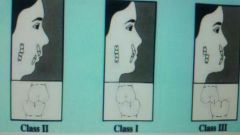
Always look at side profile/jaw of patient. Retrognathic jaw (retruded chin) & Prognathic jaw (projecting chin) |
|
|
Angle's classification |
SCTCC USES** CLASS 1= NEUTRAL OR IDEAL CLASS 2= DISTOCCLUSION CLASS 3= MESIOCCLUTION |
|
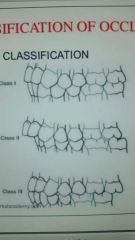
|
Angles classification |
|
|
Molar relationship of Angle's classification |
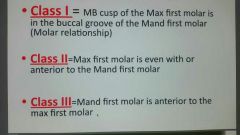
|
|
|
Interarch relationship of Angle's classification |
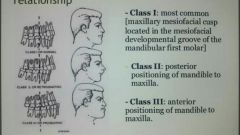
|
|
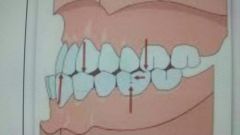
Underbite |
Class 3 malocclusion |
|
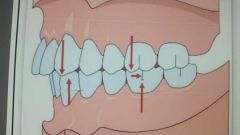
Overbite |
Class II malocclusion |
|
|
Class 1 occlusion |
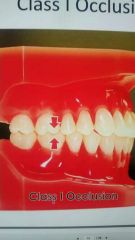
|
|
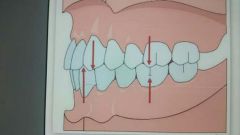
Ideal occlusion |
Type 1 malocclusion |
|
|
Lateral excursion |
Side to side movement of mandible |
|
|
Protrusion |
Being thrusted forward or outward. Mandible can be moved outward |
|
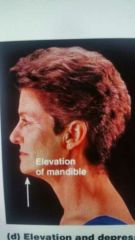
|
Elevation of mandible |
|
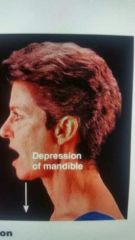
|
Depression of mandible |
|
|
Working side |
Side to which mandible moves |
|
|
Non working side |
Opposite side from which mandible moves |
|
|
Premature contact area |
The area that touches first when the maxilla and mandible occlude - should all touch roughly at same time |
|
|
Anterior coupling |
When anterior teeth touch during centric occlusion. Anterior teeth usually dont touch when jaws are occluded. |
|
|
Canine rise |
During lateral excursion the only teeth that touch are canine to canine |
|
|
Group function |
During lateral excursion several teeth touch not just canines |
|
|
Stolarized molars |
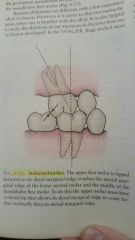
The permanent maxillary molar is tipped mesially so that the distal marginal ridge of the maxillary first molar touched the mesially ridge of the mandbular second molar |

